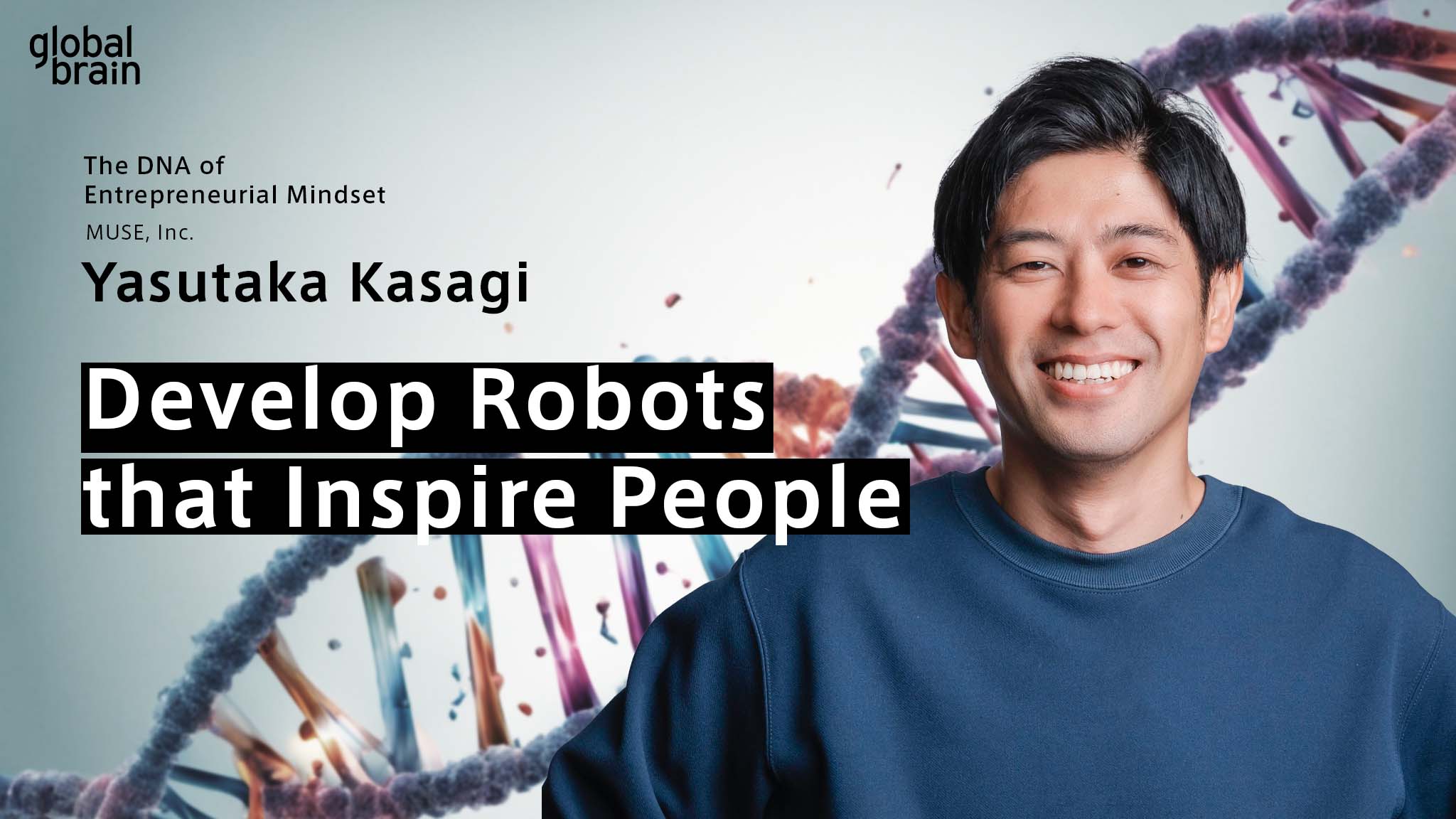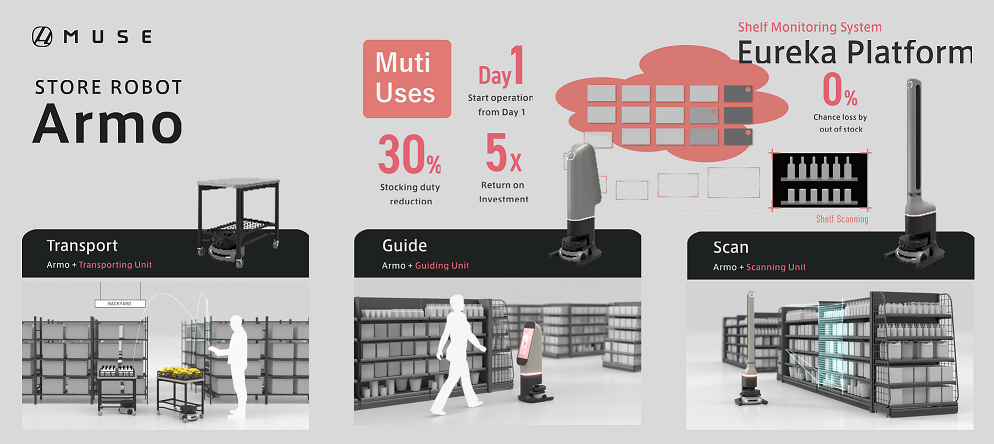The DNA of Entrepreneurial Mindset: Aiming to Develop Robots that Inspire People / Yasutaka Kasagi, MUSE Inc.
MUSE Inc. (MUSE) develops and distributes robots that help retail stores solve labor shortages and boost sales. In this article, we dive into a conversation with the company's CEO, Yasutaka Kasagi, to ask about his personal side and aspirations.

Written by the Universe Editorial Team
In “The DNA of Entrepreneurial Mindset,” we pick a startup entrepreneur who is in the limelight to find out their current values and mindset from various angles.
This time we welcomed Yasutaka Kasagi, CEO of MUSE Inc.
Yasutaka Kasagi
After graduating from Hitotsubashi University, Faculty of Commerce, Yasutaka Kasagi worked at Ernst & Young ShinNihon LLC and Goldman Sachs & Co. After that, he worked at ZMP for seven years and launched the logistics robots business, CarriRo. He successfully mass-produced and deployed the robots to more than 300 companies from scratch. He founded MUSE in April 2022.
──What made you start a company?
My father was an entrepreneur and a business owner, and his bookshelf was filled with books by famous entrepreneurs and businessmen like Konosuke Matsushita and Soichiro Honda. As a young child, this laid the foundation for me to aspire to start a business or run a company. In pursuing my career, such as when choosing my university and obtaining the certified public accountant qualification, I was always determined to enter the world of entrepreneurship and management in the future.
It was when I visited the international exposition in Aichi Prefecture in Japan that I decided to focus my career on robots. Seeing robots move as if they had life and emotion was a real eye-opener and made me think that “the concept of machines would change.”
In my previous job, I gained a lot of expertise and know-how in launching a logistics robot business from scratch, achieving mass-production and expanding sales. At that time, I saw retail company staff members struggling to use robots in their stores, and I felt that there was a huge need in this space. This is why I decided to develop a robot optimized for retail stores.
──How do you face failures and setbacks?
I experienced many failures in the past. Looking back, I often failed when I was overly optimistic or leaving the decision up to chance.
That is why I feel it is vital to ask myself “whether the concept is working properly” and “whether it is in line with my own beliefs and the company’s philosophy” before delving further.
It is difficult to actually put this into practice in our day-to-day actions, but I always try to make decisions with this in mind.
──What are your non-negotiables?
The three things I cannot compromise on when moving forward with a new business are as follows.
- It solves social issues.
- It has a high probability of success in the long term.
- It does not have any ethical issues.
Robots are an effective tool for resolving social friction that will be caused by future demographic changes. If robots become more scalable and affordable in the future, the profitability of introducing robots will significantly improve.
On the other hand, the more powerful robots and AI become, the more they will be perceived by society as taking away people’s jobs and exacerbating inequality.
Going forward, robot and AI providers will be questioned on “how they will face such social responsibilities and design their products and services” will be at stake. From this perspective, MUSE’s purpose statement is “Inspiration to the World with Robotics.” Ultimately, we aim to develop robots that will enable people to make new discoveries, find joy, and become more creative.
──Can you explain your team in one word?
I would say “trust”.
I believe that each individual can demonstrate his/her autonomy and achieve great performance when mutual trust is fostered among the members. For this reason, I try to keep the rules and processes within the company to a minimum so that each member can work at their own discretion.
──How do you recharge yourself when you feel tired mentally and physically?
I do zazen meditation. For the past 15 years or so, I’ve been doing zazen at a nearby temple on the weekend and at home after I get up on weekdays. Just like computers sometimes need to be restarted, refreshing our mind and mental state enables us to tackle various things energetically.
──What drives you forward?
Solving issues faced by the customers.
Our customers are tackling various issues every day. We may only be able to solve some of them for now, but it brings a great sense of achievement when we are able to help them solve those issues. This makes us always look for more opportunities to further help them.
──What does it take to become a CEO?
Having “big ideas” and “the ability to engage others.”
I believe the primary responsibility of a CEO is to clearly show the direction and goals of the company as one team. A small goal will only have a small impact and will not motivate the members.
It is also crucial to expand the spiral by involving customers, shareholders, business partners, members, and all other stakeholders to work together and support us, rather than trying to do everything alone.
──Lastly, please share your aspirations.
In the near future, robots will very likely become a vital and integral part of society, being used everywhere. With that in mind, I aspire to develop robots that can coexist with people and enhance their output rather than excluding them.
My hope is to contribute, even if only a little, to realize a society where robots are considered essential for people to work more energetically.
MUSE Inc.

MUSE has developed a platform that combines robotics and data to help retail stores solve labor shortage issues and boost sales. The platform service uses “Armo,” a multi-use store robot that restocks the shelves and collects floor data using its expansion units, and “Eureka Platform,” a cloud service that accumulates the floor images collected by “Armo,” to create a database on in-store information, connecting retailers and manufacturers.